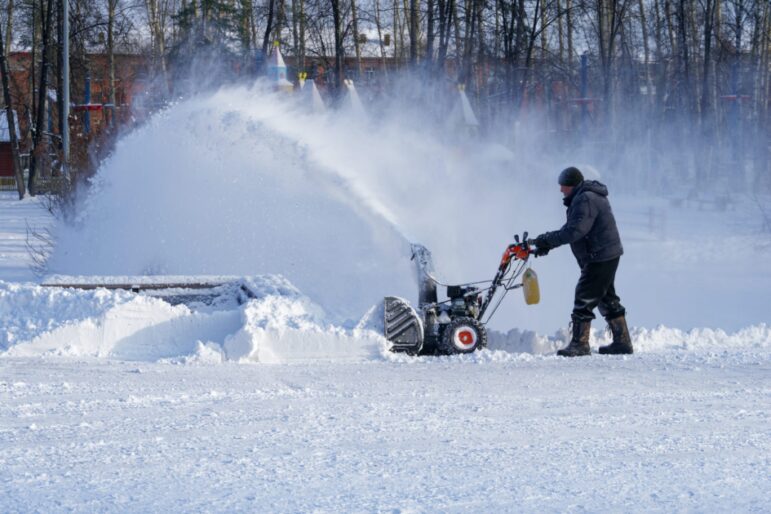As temperatures drop during the winter months, staying safe and protected while you work outside is an important part of outdoor maintenance. Cold temperatures pose a real threat when removing snow, cleaning windows, completing outdoor repairs, and beyond. Being unprepared or under-equipped means risking illness or injury when exposed to extreme winter weather.
In extremely cold temperatures, spending extended periods of time outside can result in “cold stress,” which happens when weather conditions cause someone’s external temperature to drop, eventually lowering their internal temperature, resulting in hypothermia or frostbite. According to the Government of Canada, cold stress occurs when the body temperature is no longer maintained at 36-37˚ Celsius.
“It’s about safety,” says Randy Cross, president of Fish Window Cleaning. “Winter means keeping our teams warm and dry.”
It’s important to take the necessary steps to stay safe and protected from the elements while on the job.
Take a proactive approach to prevention
When conditions fall below -7˚ Celsius, bare contact with cold surfaces present a risk. In temperatures below -17.5˚ Celsius, protective equipment needs to be part of your health and safety practice. These conditions can also be present inside, of course, when warehouses or open space areas are part of the job.
There are several factors to consider, as you prioritize protection during outdoor work for you and your team:
- Wherever possible, use outdoor huts as a place to warm up or place heaters in enclosed spaces to keep the air warm. Depending on the work, tents or tarps can offer shelter from precipitation and the wind and may also cut down on the time it takes to complete the job.
- Create a break schedule to warm up between work. Getting indoors or even out of the elements for a few minutes could lessen the risk of exposure and offer a chance to regulate body temperature.
- Dress appropriately by wearing loose layers to encourage the body to trap heat and keep warm. Avoid overdressing, as it may cause the body to sweat, which cools and freezes as the day progresses.
- When heaters are not possible, rely on winter gear to keep you warm. Fabrics like wool, polyester fleece, and polypropylene retain warmth, even after they get wet. Cotton and goose down stay warm if they stay dry, but as soon as they become moist, they lose the power to insulate, detracting from their protection.
- Keep extremities warm with hats, and face and hand coverings. Mitts are not always practical for detailed work, but by layering gloves under the mitts, you can take them on and off as required.
On-the-job safety is key, but there’s more to consider. “It’s not just about staying warm,” Cross explains. “There is also the issue of transportation from job to job through the ice and snow. That plays a part in staying safe and needs to be prioritized.” If you’re traveling to more than one location, having an adaptable schedule simplifies the process when the weather gets too extreme. When multiple locations are involved, keep transportation in mind when planning for safety and prevention.
Training your team
Assess the risks, set the expectations, create a plan, and teach your team so everyone stays safe. Wearing proper attire, identifying symptoms, warming up, reporting an incident, and taking emergency measures should all be part of your fall maintenance checklist, so you’re ready when colder weather hits.
Cross’ window cleaners work in pairs, typically one inside and one outside the building. This type of buddy system means teams can keep an eye on one another and check for signs of cold stress. Catching symptoms early means they can be addressed quickly before turning into a severe illness or injury.
Listening to your team and encouraging feedback can be a great way to implement a plan that works. Your team can provide valuable insight into what they need when they are spending extensive time outdoors. Continue to expand and improve your plan based on employee input to stay current and ensure your plan suits your needs.
With the coldest temperatures typically arriving through January and February, outdoor maintenance workers may still have a significant amount of winter left to endure. Stay safe and protected by being proactive and prepared, using the proper tools and equipment, and including education as an important part of your outdoor maintenance plan.








